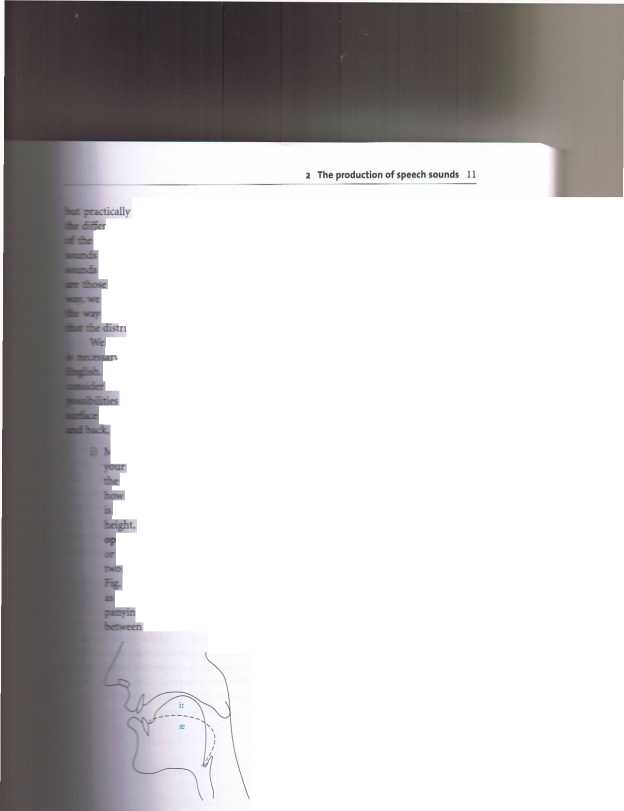CCF20100216�003


lsfori: and te
no cases where a vowel may follow. What we are doing here is looking at Jent contexts and positions in which particular sounds can occur; this is the study distribution of the sounds, and is of great importance in phonology. Study of the md at the beginning and end of English words has shown that two groups of h quite different patterns of distribution can be identified, and these two groups of vowel and consonant. If we look at the vowel-consonant distinction in this inust say that the most important difference bctween vowel and consonant is not it they are madę, but their different distributions. It is important to remember 'bution of vowels and consonants is different for each language. begin the study of English sounds in this course by looking at vowels, and it j to say something about vowels in generał before turning to the vowels of We need to know in what ways vowels differ from each other. The first matter to is the shape and position of the tongue. It is usual to simplify the very complex by describing just two things: firstly, the vertical distance between the upper i the tongue and the palate and, secondly, the part of the tongue, between front which is raised highest. Let us look at some examples:
Lakę a vowel like the i: in the English word ‘see’ and look in a mirror; if you tilt head back slightly you will be able to see that the tongue is held up close to roof of the mouth. Now make an ze vowel (as in the word ‘cat’) and notice the distance between the surface of the tongue and the roof of the mouth sow much greater. The difference between i: and as is a difference of tongue and we would describe i: as a relatively close vowel and as as a relatively en vowel. Tongue height can be changed by moving the tongue up or down, |moving the lower jaw up or down. Usually we use some combination of the sorts of movement, but when drawing side-of-the-head diagrams such as 1 and Fig. 2 it is usually found simpler to illustrate tongue shapes for vowels jff tongue height were altered by tongue movement alone, without any accom-g jaw movement. So we would illustrate the tongue height difference i: and as as in Fig. 3.
Wyszukiwarka
Podobne podstrony:
image002 P’ “What you holdjrt.yóur hands te a book. if we are lucky, it is a
Cherutich 76 Report 8 improved. A skilled workforce tends to know what they are doing and observes s
Ask Me EverythingC Where do metals come from? strange metal because it is a liquid at room temperatu
CCF20100223�000 1. Short and long i ł Short i, te. (i
ape 029 29 WOMEN. We include under the term “Exercise" proper diet and hygiene. There can be no
est4 17) Morley S., Word and Image in Modern Art, (wydanie dowolne), rozdz.: Grand Bazar, Merah
00069 }db5d1dc19534077081f7b2f44fe560 68 Hembree & Zimmer where wt ~ N(0, a2w ) with unknown an
Kavicsfestés I 09 Where to find rocks Yon may find good rocks near creeks, streams, beaches&n
htdctmw 034 NO A/££0 TO, JOHNNY. I FOLLOWED ITALL-ON THE SCANM£#, Pay particular attention to
dpp18 which is, after all, a muscle test pure and simple. In the latter case, where a man raises, on
est4 17) Morley S., Word and Image in Modern Art, (wydanie dowolne), rozdz.: Grand Bazar, Merah
UHAM088 WHAT TREATMENTS ARE AYAILABLE? * 71 stress or anxiety. In these cases, where the cause is ps
CCF20101118�002 RHYTHM and INTONA TION WTONATION PRACTICE TUTORIAL lb 2007/2008 fr
CCF20120601�002 6. Parametrom: 1. Ograniczają te przestrzeń ro.in. blaszki ligamen
więcej podobnych podstron